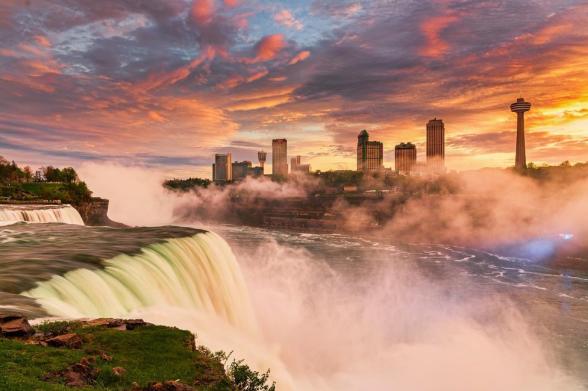The Niagara region braces for an unprecedented influx of visitors ahead of a rare solar eclipse. Mayor Jim Diodati anticipates record-breaking tourist numbers, prompting a proactive declaration of a state of emergency to prepare for logistical challenges. With traffic congestion and strain on emergency services expected, authorities prioritize safety and coordination. Despite challenges, the region aims to ensure a memorable and safe experience for all attendees.
As celestial enthusiasts gear up for a rare and spectacular cosmic event, the Niagara region of Canada braces itself for an unprecedented influx of visitors. With the impending solar eclipse on the horizon, Niagara Falls Mayor Jim Diodati’s anticipation looms large as he predicts an unprecedented surge in tourist footfall, potentially eclipsing any previous records.
Scheduled to sweep across North America on a trajectory that begins at Mexico’s Pacific coast and culminates in eastern Canada, the solar eclipse promises a breathtaking spectacle for sky gazers. However, with great anticipation comes great responsibility, especially for the communities set to be inundated by eclipse chasers.
In a proactive move to mitigate potential chaos and ensure the safety and well-being of residents and visitors alike, the regional municipality of Niagara has taken the decisive step of declaring a state of emergency. This declaration, announced recently, serves as a preemptive measure to activate additional planning resources and tools necessary to cope with the anticipated surge in population and associated logistical challenges.
The implications of hosting such a monumental event are manifold. Chief among the concerns are the projected traffic congestion, which could lead to gridlocked streets and highways, as well as increased demands on emergency services. Moreover, the strain on telecommunication networks, particularly cellular services, is anticipated due to the expected surge in data usage and communication needs.
While the solar eclipse itself promises to be a visual spectacle, drawing in countless enthusiasts from far and wide, it also underscores the importance of meticulous planning and preparedness on the part of local authorities. The declaration of a state of emergency signifies a proactive approach aimed at addressing potential disruptions and ensuring the smooth functioning of essential services during this momentous occasion.
The celestial event, slated to traverse the continent from Texas to Maine before bidding adieu in eastern Canada, is set to captivate millions with its celestial ballet. While regions outside the direct path will witness a partial eclipse, the allure of experiencing this natural wonder in its full splendor has spurred a pilgrimage-like exodus towards prime viewing locations.
For residents of the Niagara region, this presents both an opportunity and a challenge. While the influx of visitors promises economic benefits and a chance to showcase the region’s natural beauty, it also necessitates careful planning and coordination to manage the expected surge in population effectively.
In light of these considerations, Mayor Jim Diodati’s proactive stance and the declaration of a state of emergency underscore the region’s commitment to ensuring a safe, enjoyable, and memorable experience for all who flock to witness this celestial marvel. By leveraging additional planning tools and resources, authorities aim to minimize disruptions and maximize the potential of this historic event.
As the countdown to the solar eclipse begins and anticipation reaches fever pitch, the Niagara region stands ready to welcome visitors with open arms while ensuring that safety and preparedness remain top priorities. In the face of the unknown, one thing is certain: the spectacle unfolding in the skies above will serve as a reminder of the awe-inspiring wonders of the universe and the resilience of communities united in their quest for discovery.


